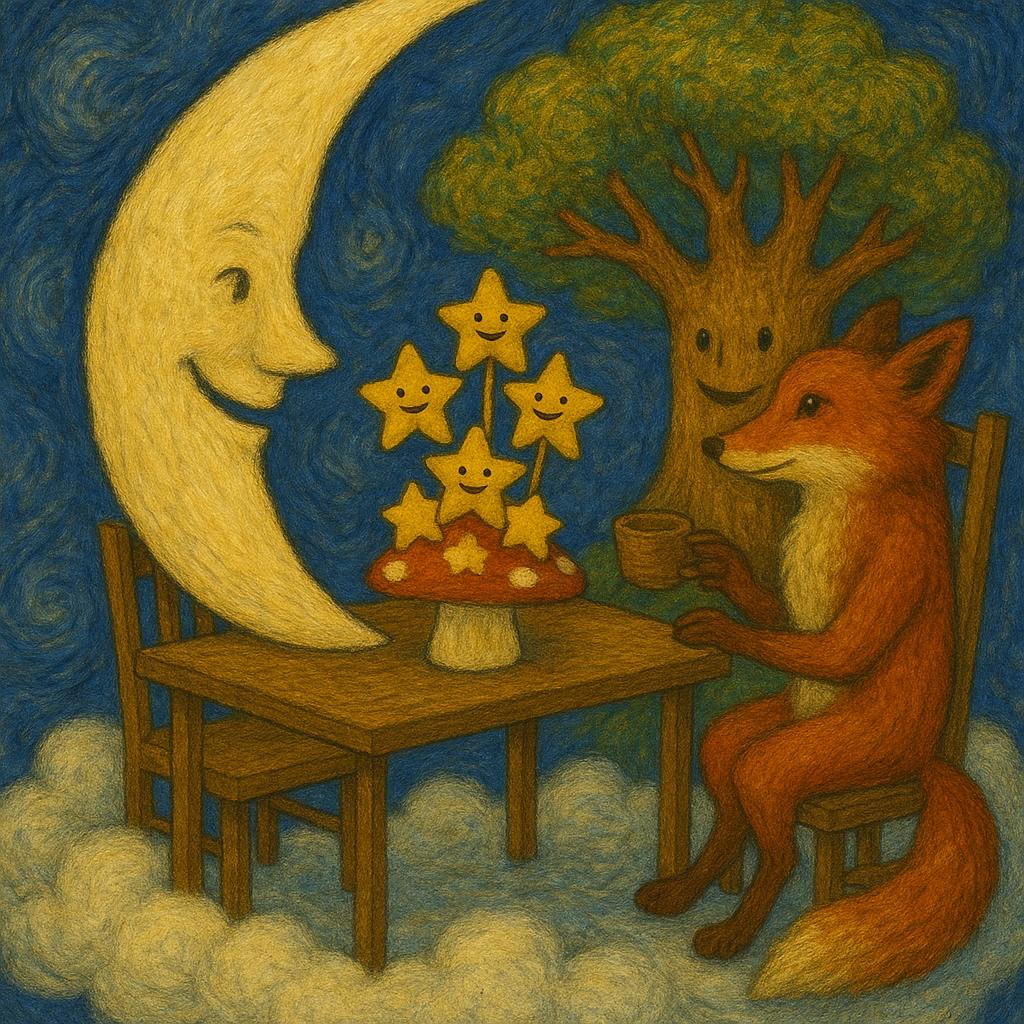TLDR; This article explores the surprising creative potential of AI hallucinations in generative AI models like DALL·E. While typically viewed as flaws in deep learning, these “errors” can produce unexpected artistic brilliance. By comparing human imagination with AI’s pattern-based logic, the piece questions whether AI’s falsehoods might actually be a new kind of creativity. It challenges how we define truth, error and inspiration in the age of artificial intelligence.
What Does It Mean for AI to “Hallucinate”?
The term hallucination has long carried weighty connotations. According to the Oxford Advanced Learner’s Dictionary, a hallucination is:
“The fact of seeming to see or hear somebody/something that is not really there, especially because of illness or drugs.”
In other words, hallucinations are typically associated with false perceptions – something to be feared or fixed.
In the world of generative AI, the meaning isn’t so different. When an LLM (Large Language Model) like ChatGPT or generative AI model like DALL-E is said to “hallucinate,” it means it has produced false or misleading information. The implications of this are serious: it suggests we can never fully trust the model. The potential risks? Misleading facts, dangerous advice, or broken software.
When Hallucination Goes Too Far
Let’s start with the dark side. Imagine you’re planning a romantic evening in a city you’ve never visited. You ask ChatGPT to recommend a restaurant and choose from a promising list of venues. But when you arrive – all dressed up – you discover the restaurant doesn’t exist in the specified location. Moreover, it does not exist in any location. In fact, it never did.
Annoying? Definitely. But it’s a relatively harmless example.
Now consider more damaging scenarios:
- Medical misinformation leads to incorrect diagnoses and treatments.
- Historical inaccuracies that cost a student their grade.
- Code errors that crash entire systems.
- Autonomous driving malfunctions due to flawed interpretations.
AI hallucinations aren’t just fictional side effects; they can have real-world consequences.
The Pentagon That Wasn’t
Two years ago, a verified Twitter (now X) account posted an image of an explosion. The photo showed a billowing cloud of smoke next to a building shaped like the Pentagon. The tweet went viral and triggered a swift market reaction – the Dow Jones dropped 85 points in just four minutes.
Here is the pickle – the image was fake.
The image was likely generated by AI, and the explosion never happened. But by the time it was debunked, the financial damage had already been done.
It is unclear if it was a human-ordered prompt that created that image or a hallucination of a model, but either way the result was the same.
When Bots Make Up Policy
More recently, Cursor’s AI support bot informed users that the tool could no longer be used on more than one machine. Outrage ensued – users complained, some even cancelled their subscriptions.
There was just one problem: it wasn’t true.
Cursor’s CEO later clarified: “We have no such policy. You’re of course free to use Cursor on multiple machines.” Who was responsible, you ask? “Unfortunately, this is an incorrect response from a front-line A.I. support bot.” Stated the CEO.
So basically, AI had invented a policy out of thin air.
The Courtroom Catastrophe
Perhaps the most notorious example: two attorneys used ChatGPT to help draft a legal brief. The model cited completely fabricated legal cases. The lawyers, unaware, submitted them to a federal judge. The result? Sanctions, fines, and public embarrassment.
The judge stated they had “abandoned their responsibilities” and continued to stand by the fake citations even after being questioned.
Can a Hallucination Be… Good?
These examples reinforce one conclusion: AI cannot be trusted blindly. Every output must be double-checked, no matter how convincing and confident it may sound. Although, can you trust humans completely?
And what if we look at hallucination from another angle?
That’s when I remembered something compelling. One of the most visionary minds in tech history – someone who quite literally helped shape the world we live in – was also known for embracing hallucination. Not by accident, but by design.
Steve Jobs, the iconic co-founder of Apple, openly credited psychedelic drugs like LSD for expanding his creative thinking. He wasn’t shy about it. In fact, he described the experience as one of the most profound in his life.
Jobs wasn’t driven by convention – he was driven by imagination. Love him or hate him, no one can deny the scale of his impact. He didn’t just build products; he bent reality to match his vision. And if altered perception played a role in that process, shouldn’t we reconsider what we mean when we say an idea – or an image – is “hallucinated”?
Jobs, LSD, and Creativity
Steve Jobs openly credited his creative breakthroughs to psychedelic experiences. In Walter Isaacson’s biography Steve Jobs, he says:
“Taking LSD was a profound experience, one of the most important things in my life. LSD shows you that there’s another side to the coin, and you can’t remember it when it wears off, but you know it. It reinforced my sense of what was important – creating great things instead of making money.” (p. 37, Chapter: “The Dropout”)
If a hallucination can help a human see the world differently, could an AI hallucination serve the same purpose?
When Hallucination Becomes a Creative Compass
Could hallucination, when placed in the right context, be more than just a flaw? Could it, in fact, become imagination? In areas where precision is secondary to vision, like art, storytelling, or design, perhaps we’re not looking at a bug, but an unexpected feature.
In my previous article, I explored how DALL-E’s so – called hallucinations turned rough children’s sketches into vibrant, full-fledged illustrations. The AI filled in the blanks not with facts, but with flair – interpreting rather than replicating.
But can we go further?
As an artist, I know the weight of a creative block. It sneaks up quietly, then stays longer than it should. The more you try to force originality, the more your ideas loop back into the same familiar patterns – safe, predictable, and uninspired. You scroll Pinterest for hours, hunting for a spark, but your mind just keeps circling back to things it’s already seen.
What if generative AI isn’t just a tool, but a kind of creative medicine? Not to replace human imagination, but to shake it loose. To suggest paths we’d never walk on our own. Maybe, in the space between precision and error, we find something better: surprise.
Logic Is Your Enemy
Our minds are wired for coherence.
When we see a castle, we imagine a princess. A dog? Probably chasing a ball. A toddler? Hugging a teddy bear.
This automatic pattern recognition is incredibly helpful for daily life – it helps us navigate the world quickly and efficiently. But here’s the catch: it also builds invisible boxes in our brains. Boxes that limit our creative potential.
The Categorisation Trap: Your Brain Loves a Story
Let’s take a look at the following cards:
Now imagine I asked you to group them into 3 even categories. Most minds would instantly see this:
- A night sky with the moon, a cloud, and a star
- A tea party scene with a table, a slice of cake, and maybe a teapot
- A forest with a fox, a tree, and a mushroom
You might add variation – maybe your fox is sniffing the mushroom, or maybe if you are more creative than the average person, it’s sitting next to a campfire, grilling it on a stick. But even at our most imaginative, we still stick to the script. Context locks us into a framework.
And when everyone’s working from the same framework… uniqueness dies a little.
Breaking the Context (on purpose)
Now let’s break it.
Let’s scramble the expected and throw our logical instincts out the window. Let’s challenge logic in favour of limitless creativity.
Picture this grouping instead:
Yep. Your brain just stalled, didn’t it?
You likely couldn’t create a visual. Or if you did, it felt disjointed, absurd, even uncomfortable.
But guess what doesn’t struggle? Generative AI of course.
Lets present the following grouping instead:
And now, let’s enjoy the limitless imagination of DALL-E 3.
Starts Celebrating Birthday with a Mushroom Cake
Tree Drinking Tea inside a Cloud
Fox and Moon Tea Party
Free from Human Logic
DALL-E was easily able to blend concepts that never co-occur in the real world (hallucinations).
Why is there such a difference between our minds and his thinking?
Humans tend to reason based on meaning, coherence, and lived experience. When asked to imagine a scene involving a moon, a fox, and a table, our brains instinctively try to make sense of the combination. We want a narrative. Our minds search for logic, context, or metaphor, and when we can’t find one, we often stall or give up. That’s because the human brain is optimised for relevance, not randomness.
DALL-E, on the other hand, doesn’t rely on personal memory or linear logic. It’s trained on billions of images and captions, exposing it to countless visual combinations – many of them unusual or even surreal. So when you prompt it with unrelated elements like a moon, a fox, and a table, it doesn’t hesitate or question whether the connection “makes sense.” Instead, it draws from the statistical patterns of how these objects have appeared together, near each other, or in similar visual contexts, even if indirectly.
In other words:
- Humans need coherence.
- DALL-E just needs correlation.
And therein lies its power: by being free from the human need for logic or internal consistency, DALL-E can confidently generate the absurd, the poetic, or the beautifully strange – all without second-guessing itself.
A Human’s Muse
We’ve been taught to fear hallucination – rightly so in many domains. In medicine, law, history, and safety-critical systems, AI must be held to a higher standard of truth. But in art, design, and imagination? The rules are different.
The very “flaw” that makes AI unreliable as a factual source might be what makes it so powerful as a creative companion. Hallucination, in the right hands, becomes something else entirely: a spark.
When DALL-E “misunderstands” a fox, a moon, and a table, it doesn’t fail – it dares. It invites us to loosen our grip on logic, to see what happens when we let go of narrative and embrace possibility.
This phenomenon can cure an artist’s block by helping our mind loosen context and logic, it can boost creativity and spark ideas that could have been beyond our grasp.
So maybe the real question isn’t “Can we stop AI from hallucinating?”
Maybe it’s: What can we build when we let it dream?
About me
I am Maria Piterberg – an AI expert leading the Runtime software team at Habana Labs (Intel) and a semi-professional artist working across traditional and digital mediums. I specialise in large-scale AI training systems, including communication libraries (HCCL) and runtime optimisation. Bachelor of Computer Science.
















